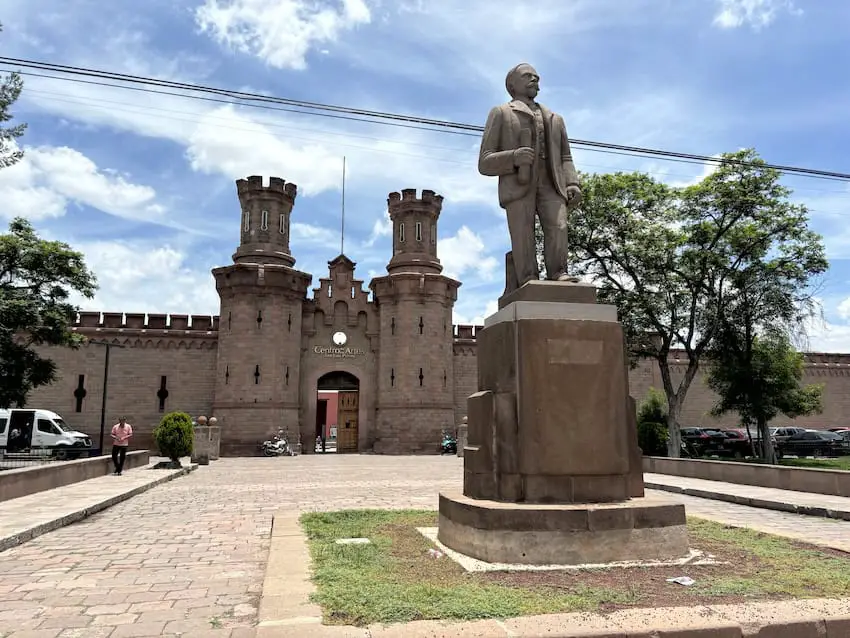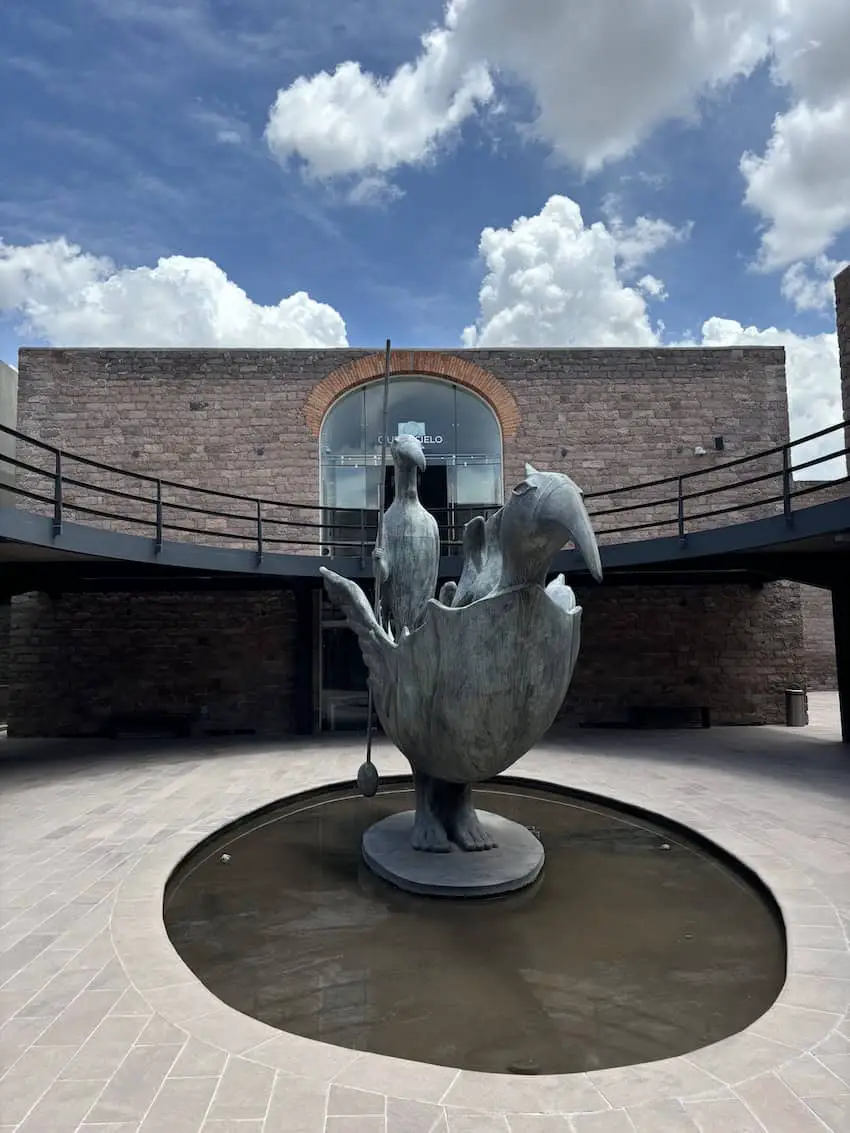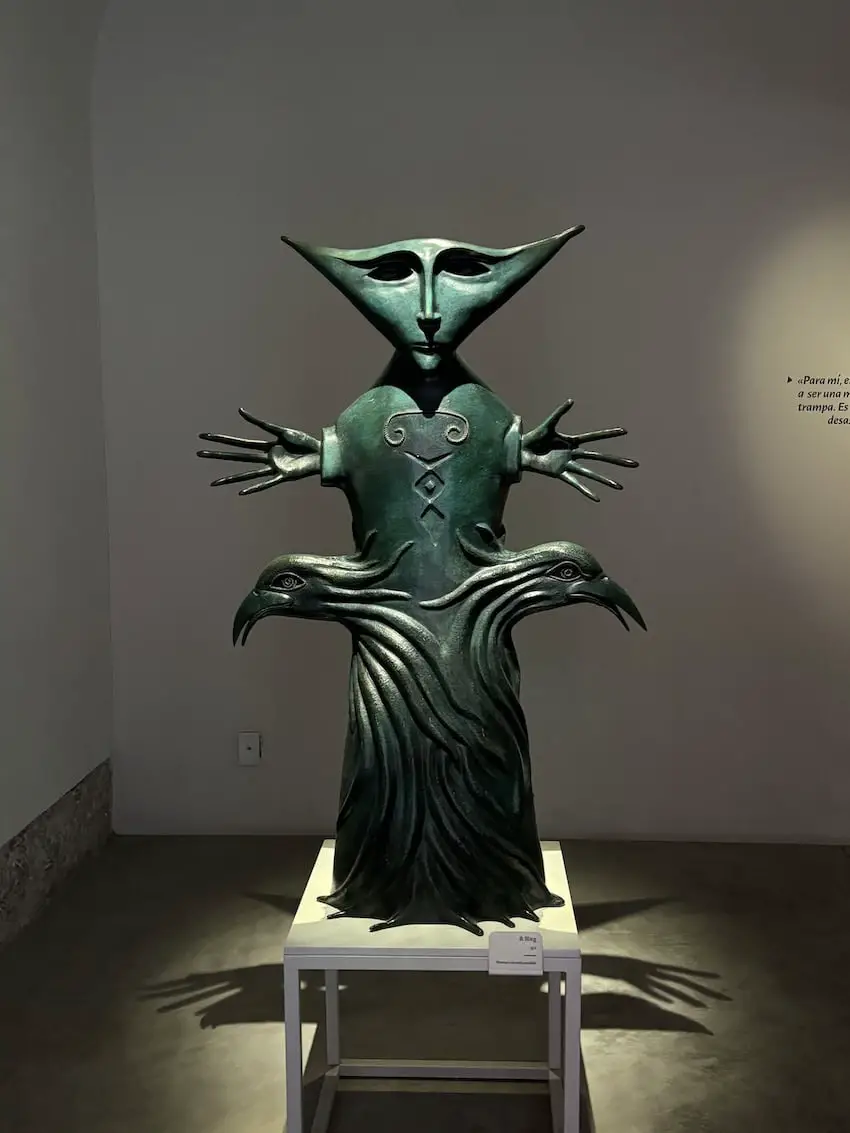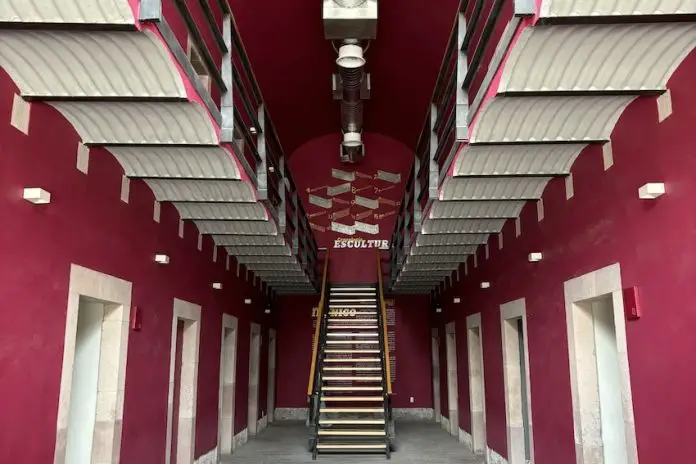San Luis Potosí has always been on my bucket list for its thundering waterfalls, milky blue natural pools, and steamy rainforest. So I surprised myself when my first visit to this state in central Mexico had nothing to do with nature at all. Instead, I hit the cobblestone streets of its 400-year-old capital city in the desert highlands to explore a different kind of visual feast — a 19th-century prison that has been revitalized as one of the best museums in the state.
The stony walls of San Luis Potosí’s former penitentiary set an imposing scene. The twin turrets of the main gate loom ominously on either side of a soaring archway sealed by massive wooden doors. At first glance, the structure feels straight out of Shawshank Redemption. If these walls could talk, they’d tell a story of pain and punishment. This was, after all, the largest penitentiary in the state for more than 100 years. But behind the carved wooden doors, the story starts to shift. Color seeps in, and you feel the energy change. Today, this once somber prison has been transformed into one of the best museums in San Luis Potosí — a center for inspiration, creativity, education, and rebirth.

San Luis Potosí is renowned for its natural beauty and colonial history. But it also boasts a vibrant art scene through its dozens of museums. At the heart of this creative scene is the Centro de las Artes de San Luis Potosí Centenario, a unique institution that combines historical significance with contemporary artistic expression.
A Historic Transformation
The bones of the Centro de las Artes are the former prison walls, a neoclassical structure that dates back to the late 19th century. Passing through the main gates, the space opens up to a bright, open-air courtyard, which then funnels visitors deeper into the belly of the former prison. Opened in 2008, the center stands today as a testament to the transformative power of art and culture.
In theory, penitentiaries can be places of rehabilitation and rebirth, and the structure’s transformation into a creative space helps bring that metaphor to life. The original stone walls and iron bars have been preserved, providing a stark contrast to the modern art installations. Passing between the different art spaces, you’ll wander the historic pathways surrounded by sky-high stone walls on either side. After you enter the cell blocks, you are jolted back to the present day and the space’s transformation. Each wing has been reimagined as a center for a different discipline, from art galleries and dance studios to music spaces, digital art, science, and humanities.
San Luis Potosí is a visual stunner of a city with architecture that dates back more than 400 years. It’s no surprise that the Centro de las Artes is equally fascinating, with its grand facades and elegant columns juxtaposed against modern sculptures, including the center watchtower, which is painted with a different theme every month. Modern glass and steel structures have been woven into the historic framework of the old prison, creating new spaces for exhibitions while still paying tribute to the penitentiary’s past.

Deeper within the grounds, more life and color pop into view, from bright purple bougainvillea blossoms to desert cactus flower gardens, babbling water features, and stunning sculptures. The Centro de Las Artes is more than a museum; it’s a dynamic cultural hub. Former cells have been converted into pocket-sized galleries featuring rotating contemporary art exhibitions. Exhibitions span everything from painting and sculpture to photography and multimedia.
But the Centro de las Artes is not only a haven for traditional art forms. Its expansive grounds act as a canvas for street art. Wandering the outdoor pathways, you’ll encounter vibrant murals and graffiti that transform the penitentiary walls into lively expressions of contemporary culture.
Museo Leonora Carrington
While many of the museum’s exhibits are rotating, one of its permanent collections is the Museo Leonora Carrington, dedicated to the life and work of one of Mexico’s great surrealist artists. The museum-within-a-museum opened in 2018 and showcases one of the most extensive collections of Carrington’s enigmatic work. One of the founders of the surrealist movement in Mexico, Carrington is known for her otherworldly paintings, sculptures, and drawings. You can dive deep into Carrington’s fantastical world, where mythological creatures and dreamlike landscapes come to life.
From her early paintings depicting whimsical, bizarre scenes to her later sculptures exploring themes of mythology and magic, the museum highlights the depth and breadth of Carrington’s imagination. Each outdoor courtyard is dedicated to a larger-than-life example of some of her most famous sculptures.

Performances and Events
The Centro de las Artes is one of the city’s top venues for performances and cultural events. The theater and performance spaces regularly host concerts, dance performances, theater, and film screenings.
Each summer, the penitentiary grounds become a buzzy food and wine hotspot with the San Luis Potosí Wine Festival. Wine tastings, expert-led workshops, and gourmet pairings bring winemakers (and wine drinkers) from around the region to dig deep into the viticulture of San Luis Potosí and the surrounding areas. Live music, art exhibitions, and cultural performances make this one of the most exciting events in the city.
Other Museums in San Luis Potosí
While the Centro de las Artes is the most impressive museum in San Luis Potosí, the art appreciation does not end beyond the prison walls. The city is overflowing with art institutions. The Museo Frederico Silva, for example, housed in a 17th-century hospital, has been dedicated to the works of Mexican sculptor Frederick Silva.
Down the road, the Museo de Arte Contemporáneo, located within a former convent, features rotating exhibitions of painting, photography, video, and installations. The National Museum of Masks, Museo de las Máscaras, has one of the most extensive collections of cultural masks from both Mexico and around the world.
The Museo del Ferrocarril is an Art Deco masterpiece that tells the railway history of San Luis Potosí. The museum is located within a former railway station and showcases Mexico’s railroad heritage through vintage locomotives and railway equipment.
The Bottom Line
San Luis Potosí will forever be one of the top adventure capitals in Mexico, and I still hope to visit its jungle-shrouded waterfalls eventually. But its city art scene was a different kind of visual I was not expecting, and one I would not hesitate to revisit again.
Meagan Drillinger is a New York native who has spent the past 15 years traveling around and writing about Mexico. While she’s on the road for assignments most of the time, Puerto Vallarta is her home base. Follow her travels on Instagram at @drillinjourneys or through her blog at drillinjourneys.com.
